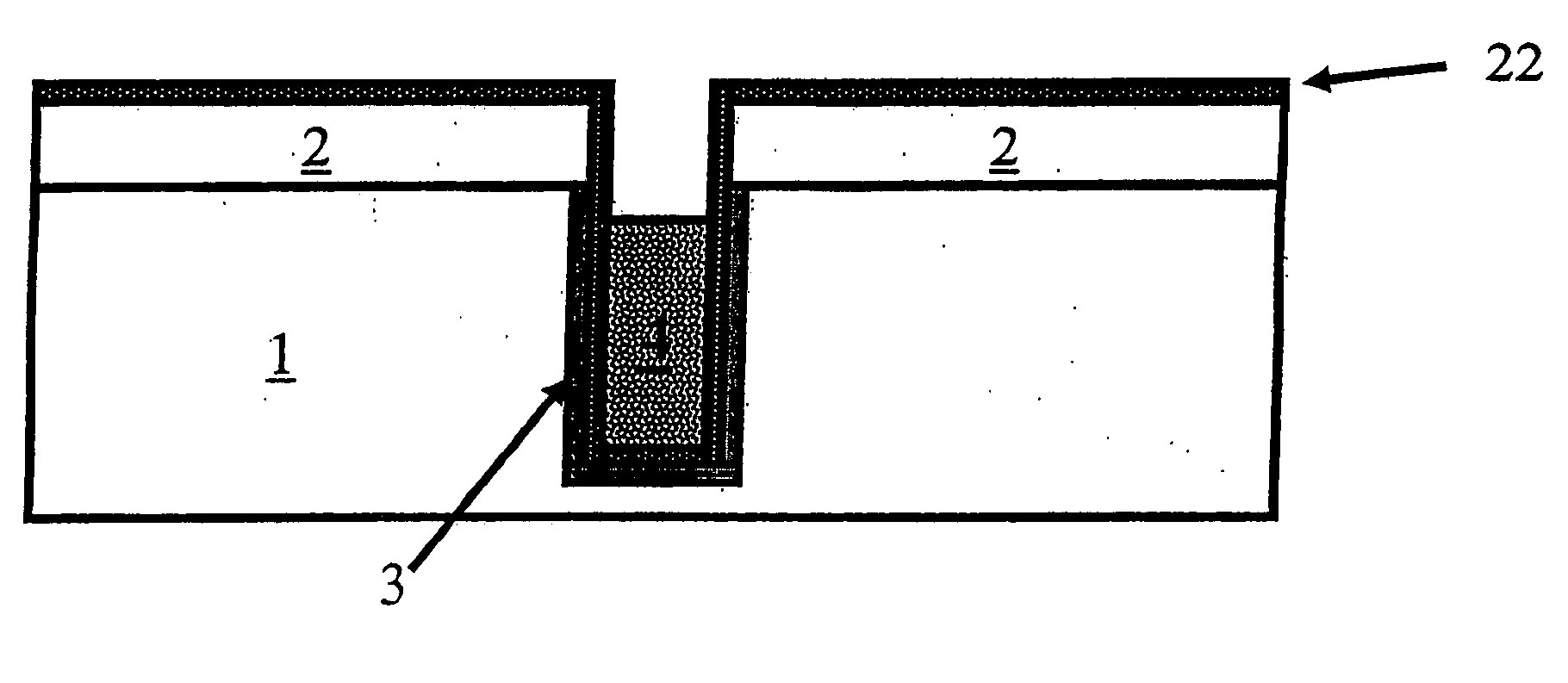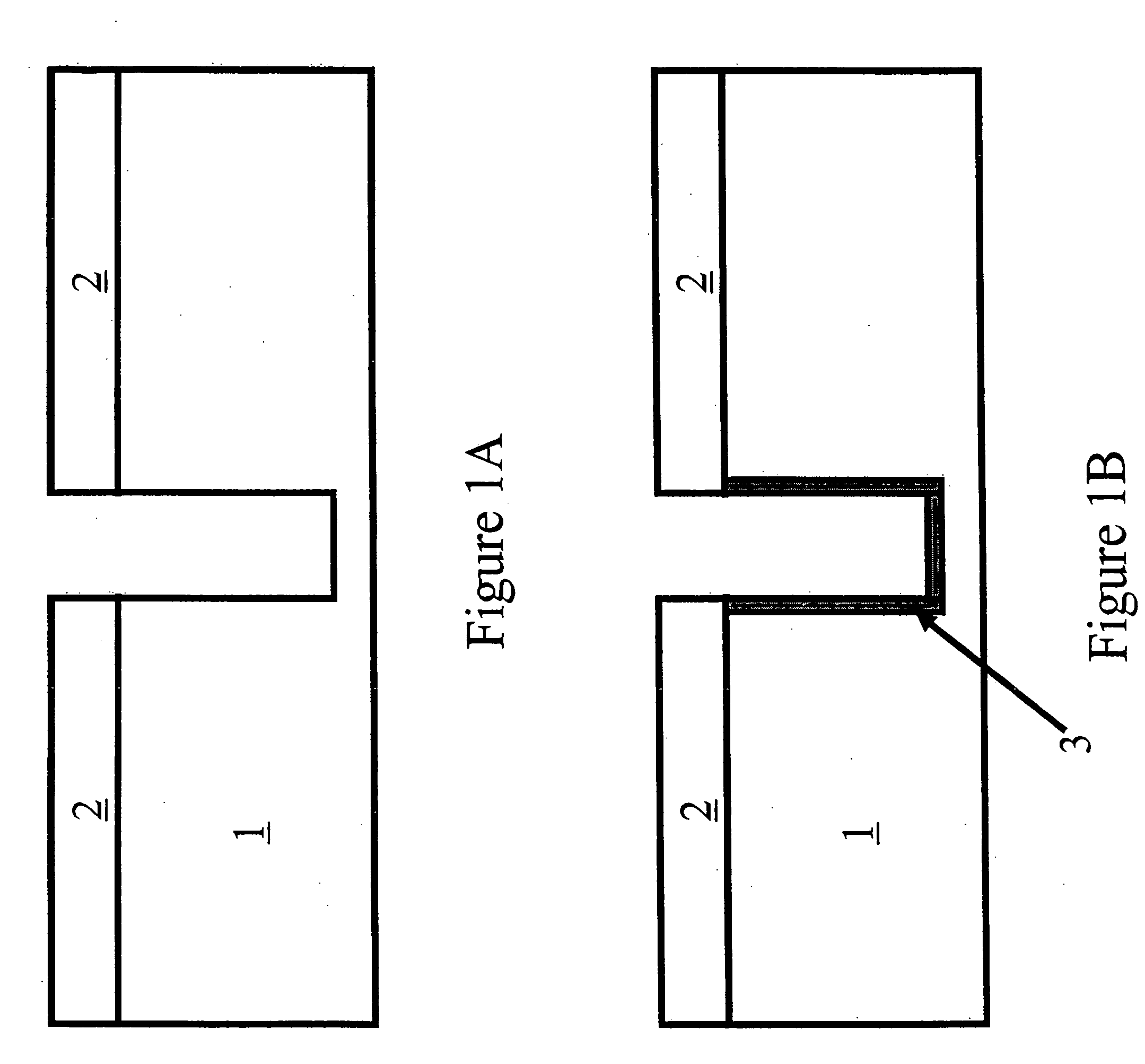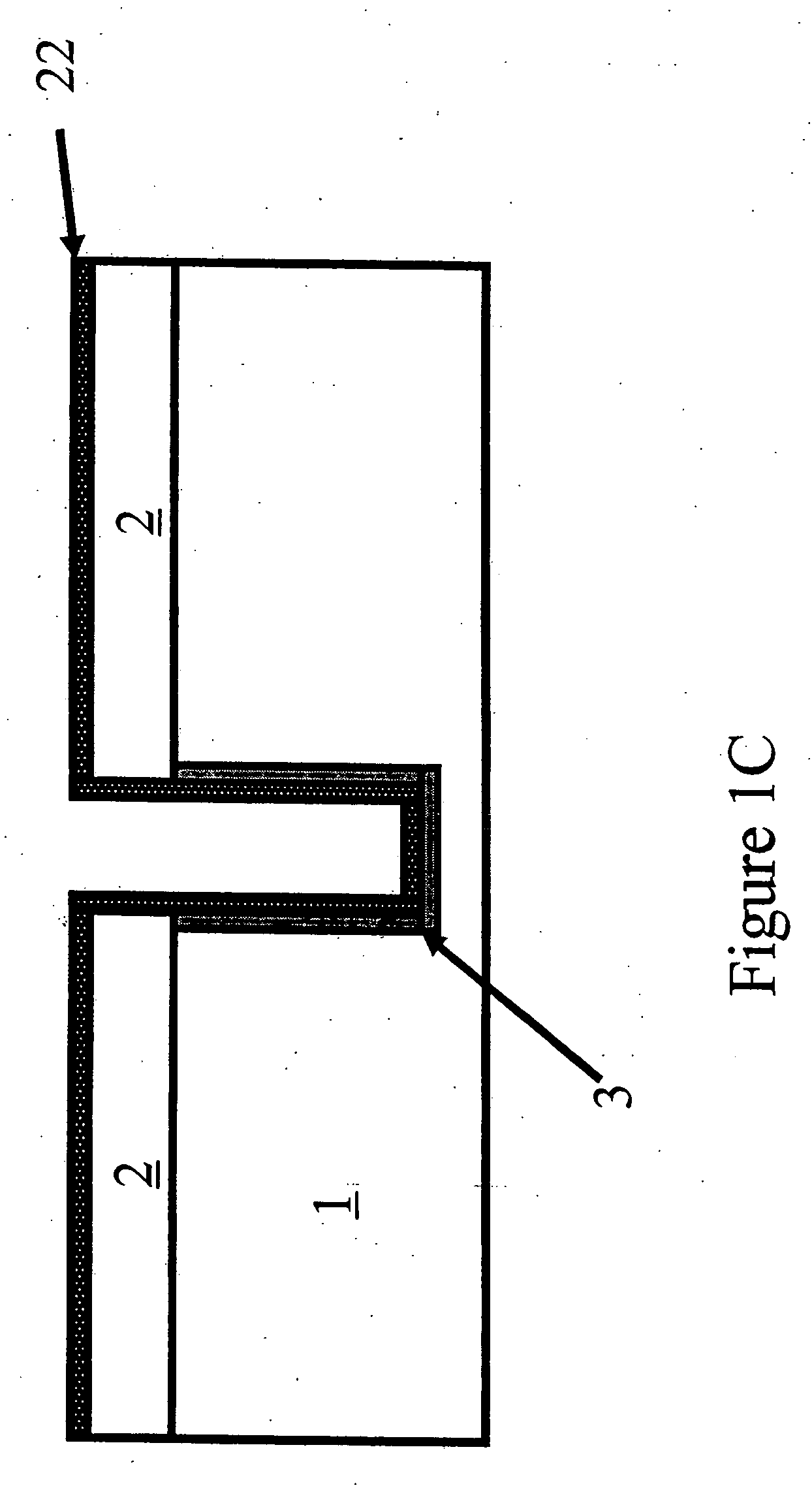Formation of deep trench airgaps and related applications
a technology of air gap and deep trench, applied in the field of trench formation, can solve the problems of not being very scalable, many methods had certain process limitations, and the collector substrate capacitance is a significant contributor to the total switching delay, so as to reduce the width of the deep trench, reduce the total device area, and reduce the parasitic collector substrate perimeter capacitance.
- Summary
- Abstract
- Description
- Claims
- Application Information
AI Technical Summary
Benefits of technology
Problems solved by technology
Method used
Image
Examples
Embodiment Construction
[0039] The following description and examples illustrate a preferred embodiment of the present invention in detail. Those of skill in the art will recognize that there are numerous variations and modifications of this invention that are encompassed by its scope. Accordingly, the description of a preferred embodiment should not be deemed to limit the scope of the present invention.
[0040] The term “sacrificial,” as used herein, is a broad term and is used in its ordinary sense, including, without limitation, a material or a layer that is deposited temporarily, and that is not supposed to remain, at least totally, in the final device, or a material or layer that is destined to be removed, at least partially, during the process of fabricating a device.
[0041] The term “spacer,” as used herein, is a broad term and is used in its ordinary sense, including, without limitation, a material or layer that is deposited on a side wall of a trench, hole, via, or other structure that is partially...
PUM
 Login to View More
Login to View More Abstract
Description
Claims
Application Information
 Login to View More
Login to View More - R&D
- Intellectual Property
- Life Sciences
- Materials
- Tech Scout
- Unparalleled Data Quality
- Higher Quality Content
- 60% Fewer Hallucinations
Browse by: Latest US Patents, China's latest patents, Technical Efficacy Thesaurus, Application Domain, Technology Topic, Popular Technical Reports.
© 2025 PatSnap. All rights reserved.Legal|Privacy policy|Modern Slavery Act Transparency Statement|Sitemap|About US| Contact US: help@patsnap.com



